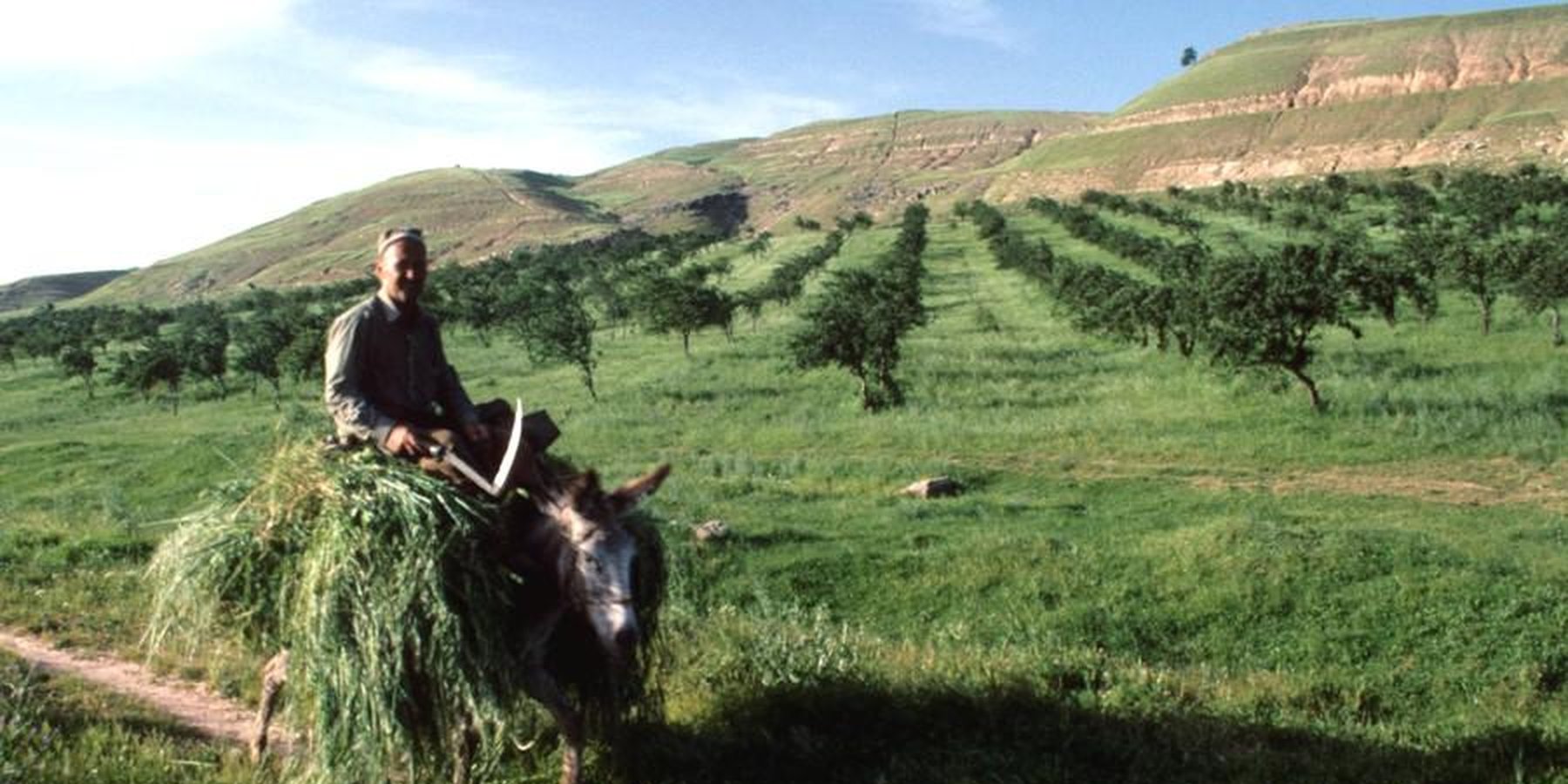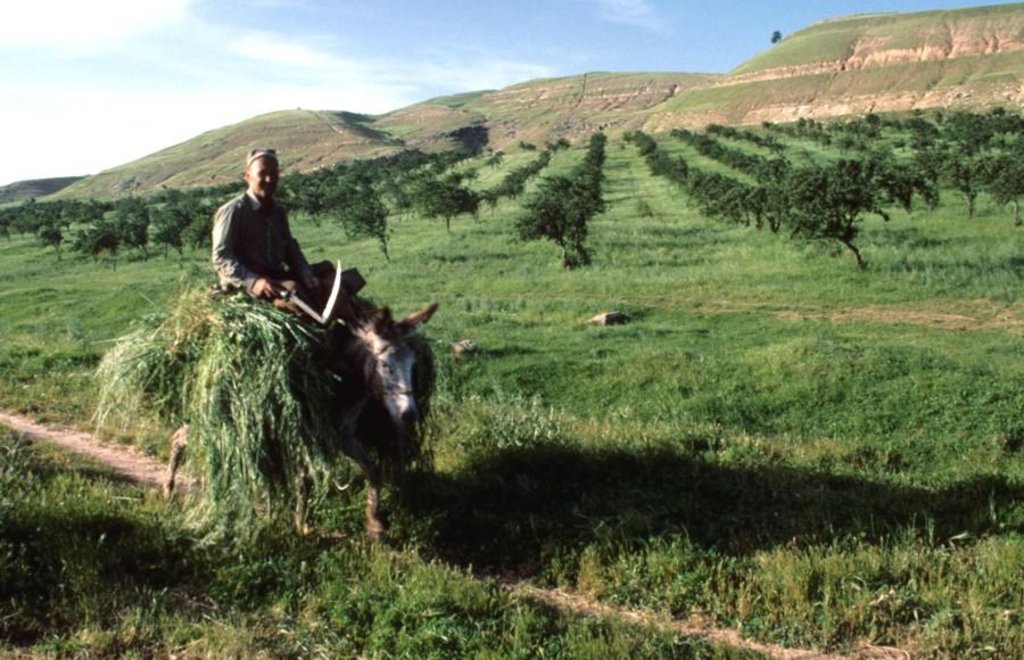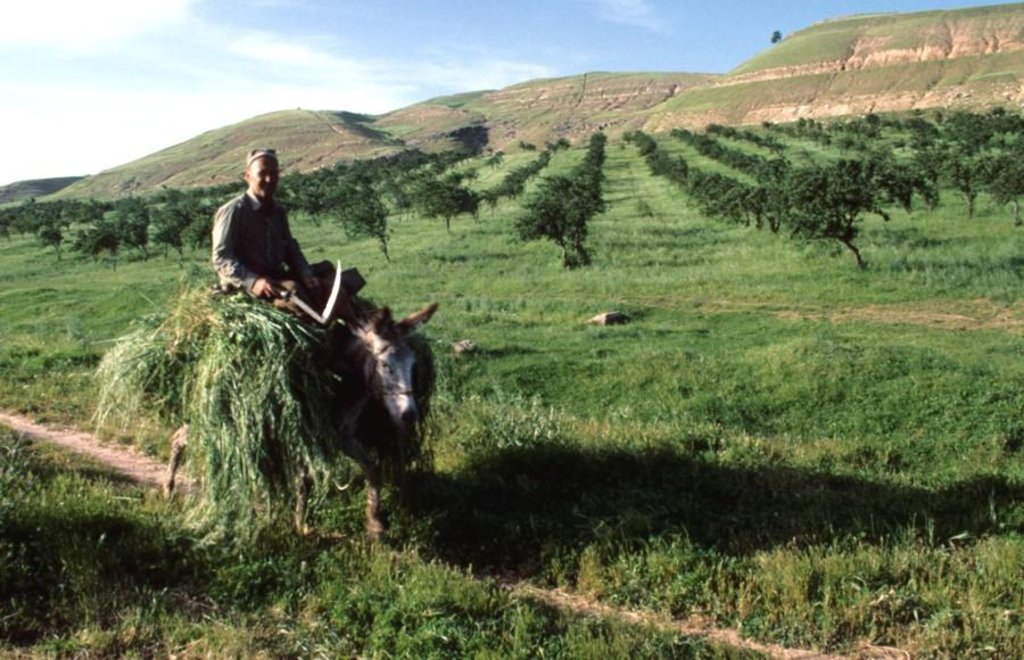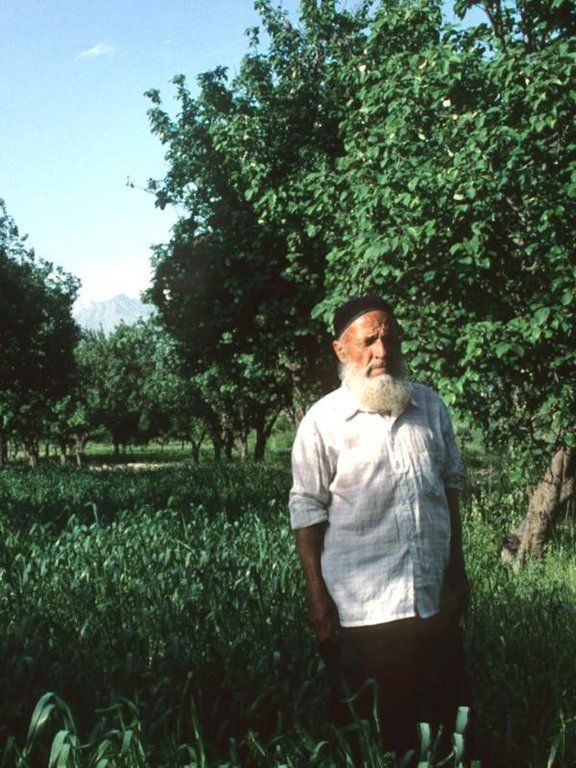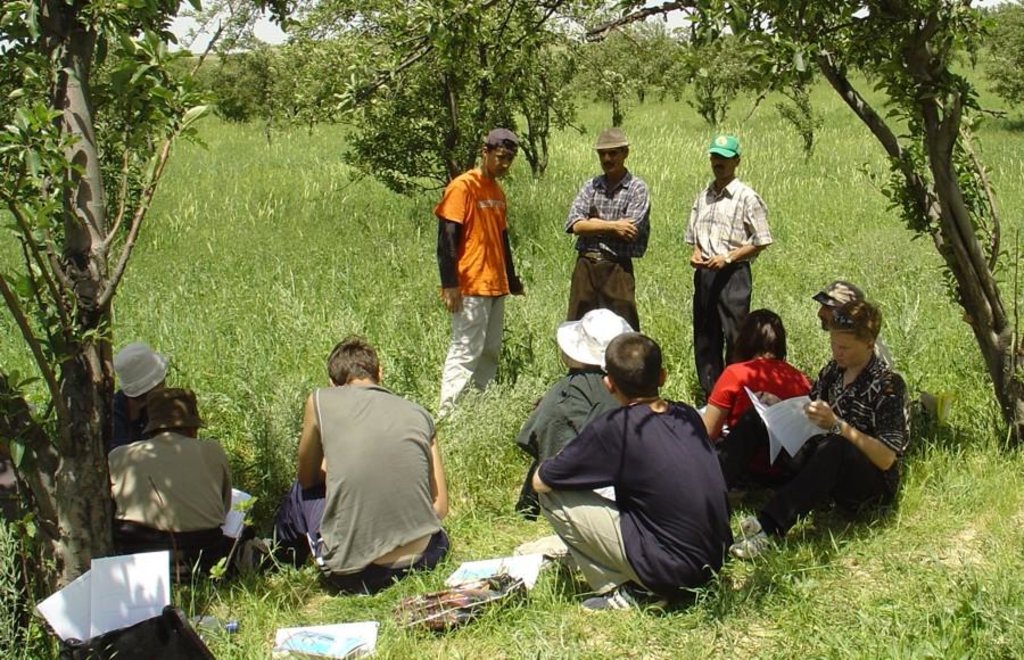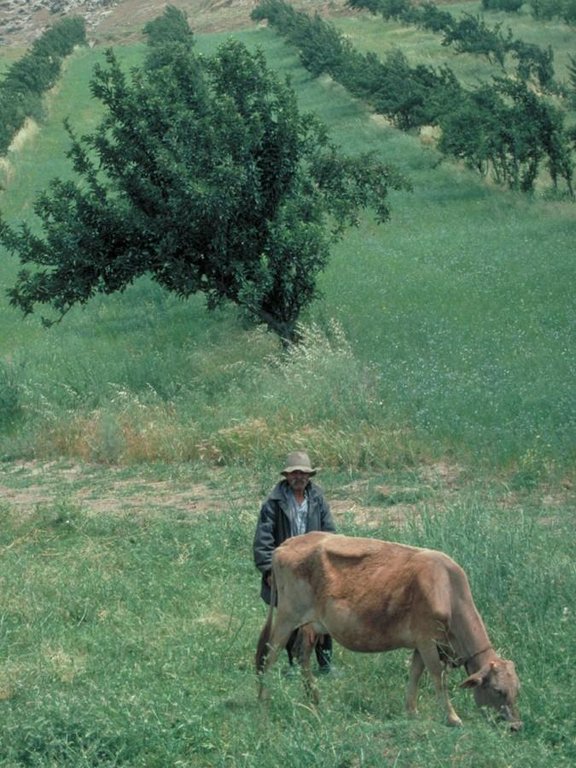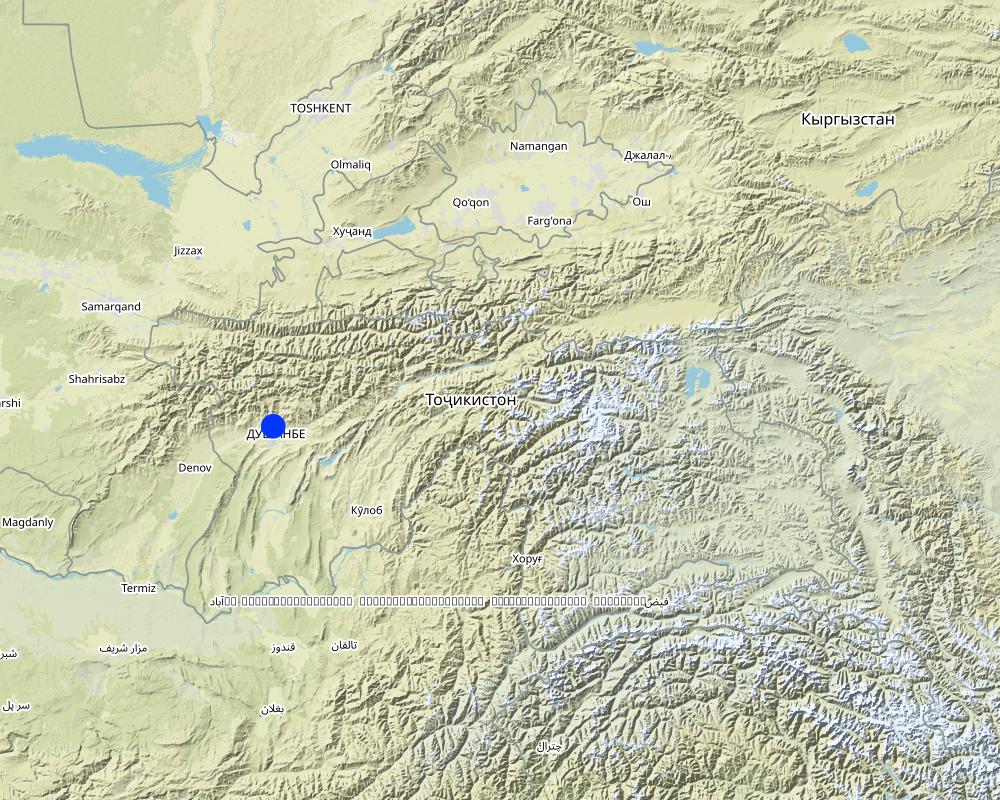Transition from a centralised regime to a local initiative [塔吉克斯坦]
- 创建:
- 更新:
- 编制者: Sanginboy Sanginov
- 编辑者: –
- 审查者: Alexandra Gavilano, David Streiff, Deborah Niggli, Joana Eichenberger
approaches_2660 - 塔吉克斯坦
- Transition from a centralised regime to a local initiative: July 5, 2017 (inactive)
- Transition from a centralised regime to a local initiative: Aug. 7, 2017 (inactive)
- Transition from a centralised regime to a local initiative: April 4, 2018 (inactive)
- Transition from a centralised regime to a local initiative: Nov. 2, 2021 (public)
查看章节
全部展开 全部收起1. 一般信息
1.2 参与方法评估和文件编制的资源人员和机构的联系方式
有助于对方法进行记录/评估的项目名称(如相关)
Book project: where the land is greener - Case Studies and Analysis of Soil and Water Conservation Initiatives Worldwide (where the land is greener)有助于对方法进行记录/评估的项目名称(如相关)
Pilot Program for Climate Resilience, Tajikistan (WB / PPCR)有助于对方法进行记录/评估的机构名称(如相关)
Soil Science Institute (Soil Science Institute) - 塔吉克斯坦1.3 关于使用通过WOCAT记录的数据的条件
编制者和关键资源人员接受有关使用通过WOCAT记录数据的条件。:
是
1.4 SLM技术问卷的参考
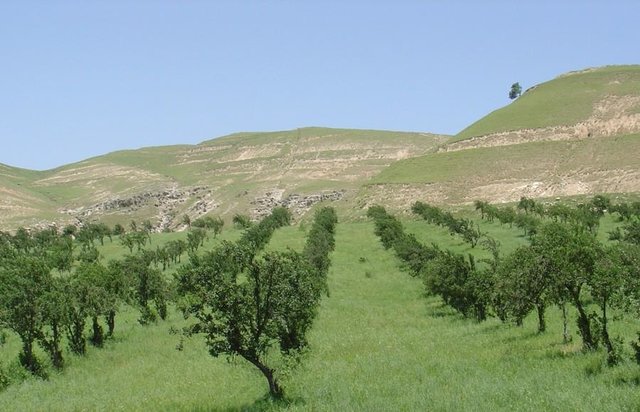
Orchard-based agroforestry [塔吉克斯坦]
An agroforestry system where legumes and cereals are planted in fruit orchards, giving simultaneous production and conservation benefits.
- 编制者: Loes Masselink
2. SLM方法的描述
2.1 该方法的简要说明
A land use system established during the previous authoritarian regime of the Soviet Union is now being adapted to the farmers' needs via their own initiative.
2.2 该方法的详细说明
该方法的详细说明:
Aims / objectives: This case study compares two approaches which both contributed to the development of the current orchard-based agroforestry system: (1) Soviet approach: the previous state-run dictatorial system of the soviet times and (2) Farmers initiative: the current bottom-up approach. Farmers from the hilly Faizabad region with its deep and highly erodible loess soils had traditionally combined the cultivation of beans and wheat with fruit trees. During the 1980s the Soviet administration decided to intensify apple production in this area and to establish orchards on a large scale, making use of the well suited environmental conditions. The system introduced, comprised of densely planted purestand orchards, mechanically constructed terraces (where the slopes required this), and an irrigation system. Establishment was conducted through a top-down/authoritarian approach, and all inputs for implementation and maintenance were provided by the state. Farmers worked as employees on the state farms and received cash wages.
Methods: After the collapse of the Soviet Union and the start of the civil war, Tajikistan suffered from acute food shortages. In 1993, the Tajik government lifted the prohibition on planting wheat in rainfed areas. Farmers renting the land of the former state farms began to revert to intercropping annual crops, mainly wheat and beans, between thinned rows of apple trees. This was for both household use and for sale at the market. The initiative came from the farmers, and reflected the traditional system of production. However the pumping station and irrigation system have not been working for the last 10 years and therefore supplementary irrigation has not been available. In contrast to former times, decision-making, management activities, and provision of inputs/finance are all carried out by the land users themselves. In some cases, marginal farmers received incentive support from NGOs or from the World Food Programme. Systematic assistance from extension services, financial support to purchase pesticides or fertilisers, and investment to restore the irrigation system would all help to improve the agroforestry system and thus increase yields.
2.3 该方法的照片
2.5 采用该方法的国家/地区/地点
国家:
塔吉克斯坦
区域/州/省:
Faizabad
Map
×2.6 该方法的开始和终止日期
注明开始年份:
1993
2.7 方法的类型
- 传统/本土
2.8 该方法的主要目的/目标
The previous Soviet approach aimed to increase apple production in a region with ideal environmental conditions. The current approach used by farmers aims to make more intensive use of agricultural lands through an agroforestry system, and especially to provide food security by growing annual crops between the trees.
The SLM Approach addressed the following problems: - Soviet times: the original problems addressed by the authorities during the soviet era were how to increase agricultural production, without consideration of the needs of the local rural population. - Post-soviet period: in 1993, when the soviet era ended, and the prohibition on cultivation of wheat was lifted, the underlying problem was a shortage of food, especially of wheat.
2.9 推动或妨碍实施本办法所适用的技术的条件
财务资源和服务的可用性/可得性
- 阻碍
1) Soviet Approach: The establishment and maintenance of the irrigation system, terraces and the orchards themselves required high financial input.
2)Farmers' initiative: Lack of funds for fertilizers, manure (which is burned as fuel for heating) and pesticides.
Treatment through the SLM Approach: 1) Equipment, seedlings and salaries were all provided by the central Soviet state.
2) Improved fertility management: farmers developed cost-effective practices such as crop rotation and fallow periods etc.
法律框架(土地使用权、土地和水使用权)
- 阻碍
The existing land ownership, land use rights / water rights hindered a little the approach implementation Allowing cropping on the farms was the first step; then land use rights were moved from state to individual farmers. While those orchards, which are still managed as state farms, are often not well looked after, renting of land and issuing of landholder certificates, generally leads to improved orchard management. However, access to land belonging to state farms (through rental agreements) is limited.
3. 相关利益相关者的参与和角色
3.1 该方法涉及的利益相关者及其职责
- 当地土地使用者/当地社区
- 教师/学龄儿童/学生
- 国家政府(规划者、决策者)
3.2 当地土地使用者/当地社区参与该方法的不同阶段
| 当地土地使用者/当地社区的参与 | 指定参与人员并描述活动 | |
|---|---|---|
| 启动/动机 | 无 | Involvement during the current approach: self-mobilisation, farmers' initiative to increase crop production by intercropping in orchards |
| 计划 | 无 | Involvement during the Soviet approach: none Involvement during the current approach: farmer's are fully involved using their own initiatives. |
| 实施 | 无 | Involvement during the Soviet approach: payment for casual labour. Involvement during current farmers' initiative: interactive/self-mobilisation, responsibility for all steps, technical assistance from extensionists. |
| 监测/评估 | 无 | Involvement during the Soviet approach was interactive, via observations, public meetings, workshops, etc. Involvement during current farmer's initiative: includes self-mobilisation, interactive, responsibility for all the steps, technical assistance from external sources. |
| Research | 无 | Involvement during the Soviet approach was passive: technology development in the Faizabad Horticulture Institute. Involvement during current farmers' initiative: none. |
3.4 有关SLM技术选择的决策
具体说明谁有权决定选择要实施的技术:
- 主要是土地使用者,由SLM专家提供支持
解释:
Soviet approach: decisions made by the state and local authorities. Current farmer's initiative: decisions made mainly by land users themselves supported by specialists.
Decisions on the method of implementing the SLM Technology were made by mainly by land users supported by SLM specialists. Soviet approach: decisions made by technical specialists. Current farmer's initiative: decisions made mainly by land users supported by agricultural extension service (technical assistance).
4. 技术支持、能力建设和知识管理
4.1 能力建设/培训
是否为土地使用者/其他利益相关者提供培训?:
是
涵盖的主题:
Training was provided on-the-job, by public meetings and through courses. Training focused on improving irrigation, tree planting practices and tree management. Training conducted during the establishment of the orchards was useful and adequate. No training was given (naturally) in intercropping of wheat and other cereals between the rows of apple trees the farmers??? initiative. However in order
4.2 咨询服务
土地使用者有权使用咨询服务吗?:
是
说明/注释:
Key elements: For running the orchards during Soviet times a top-down/authoritarian approach was used
4.3 机构强化(组织发展)
是否通过这种方法建立或加强了机构?:
- 否
4.4 监测和评估
监测和评估是该方法的一部分吗?:
是
注释:
bio-physical aspects were ad hoc monitored by 0 through observations; indicators: erosion and crop growth - sedimentation and plant development
economic / production aspects were regular monitored by 0 through measurements; indicators: farmers' yield and profit
area treated aspects were ad hoc monitored by 0 through measurements; indicators: None
no. of land users involved aspects were ad hoc monitored by 0 through observations; indicators: None
There were no changes in the Approach as a result of monitoring and evaluation: None under either.
4.5 研究
研究是该方法的一部分吗?
是
提供进一步的细节,并指出是谁做的研究:
During the original establishment of the orchards, research was conducted. For the new system of intercropping with wheat, research contributed by providing support with respect to choice of varieties.
5. 融资和外部物质支持
5.1 该方法中SLM组成部分的年度预算
注释(例如主要的资助来源/主要捐助者):
Approach costs were met by the following donors: local community / land user(s) (by the farmer's initiative): 100.0%
5.2 为土地使用者提供财政/物质支援
土地使用者是否获得实施该技术的财政/物质支持?:
否
5.4 信用
是否根据SLM活动的方法给予信用值?:
是
对条件(利率、回报等)进行具体说明:
Repayment conditions: For the original establishment of the orchards loans were provided by the state at a very low interest rate. Currently, for cultivating cereals and legumes, farmers have access to loans, but the interest rate is very high..
6. 影响分析和结论性陈述
6.1 方法的影响
Currently: moderately positive impact on soil and water conservation through the agroforestry system.
Did other land users / projects adopt the Approach?
- 否
- 是,很少
- 是,中等
- 是,支持力度很大
None known.
6.2 土地使用者实施SLM的主要动机
- 增加生产
This case illustrates the challenges in the transition from state-run large-scale farming to individual management of smaller units. In this case, soviet Tajikistan had established pure-stand orchards. However, in response to acute food shortage during the civil war, farmers started to intercrop wheat and beans in their orchards: a better all-round production/conservation system.
6.3 方法活动的可持续性
土地使用者能否维持通过该方法实施的措施(无外部支持的情况下)?:
- 否
若否或不确定,请具体说明并予以注释:
The Soviet approach of orchards managed through state farms effectively died out with the collapse of the Soviet Union: the irrigation system ceased to function and inputs were not provided anymore by the state. Furthermore, the land use system was not adequate.
6.4 该方法的长处/优点
| 编制者或其他关键资源人员认为的长处/优势/机会 |
|---|
| Farmer's initiative: Farmers get diversified and additional products (grain, apples, beans, hay, etc). (How to sustain/ enhance this strength: The government should support the farmer's initiatives. The marketing system for selling fruits should be better developed.) |
| Farmer's initiative: Farmers themselves are finding a way out of the poverty trap. (How to sustain/ enhance this strength: Land reform should be improved and every farmer should be eligible for land certificates/titles.) |
| Soviet approach: Well managed and controlled land use system with efficient irrigation system, high production, ensured maintenance, provision of fertilisers and technical assistance. |
6.5 该方法的弱点/缺点以及克服它们的方法
| 编制者或其他关键资源人员认为的弱点/缺点/风险 | 如何克服它们? |
|---|---|
| Farmer's initiative: Further extension of the agroforestry system is limited without support from the extension service | The extension service should provide more inputs. |
| Farmer's initiative: Land use rights: as long as the land still belongs to the state, people have very little motivation to improve it | Privatise the land. |
| Soviet approach: No diversity, mono-cropping system aimed at maximised production; as soon as state support ceased, the system collapsed. |
链接和模块
全部展开 全部收起链接

Orchard-based agroforestry [塔吉克斯坦]
An agroforestry system where legumes and cereals are planted in fruit orchards, giving simultaneous production and conservation benefits.
- 编制者: Loes Masselink
模块
无模块


